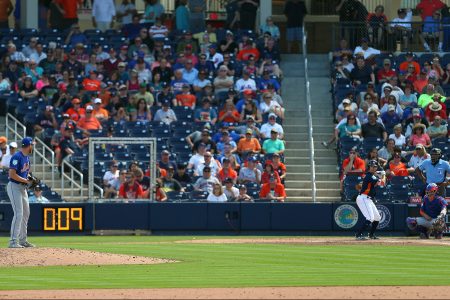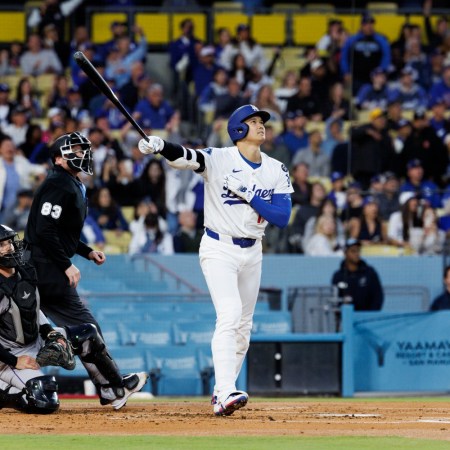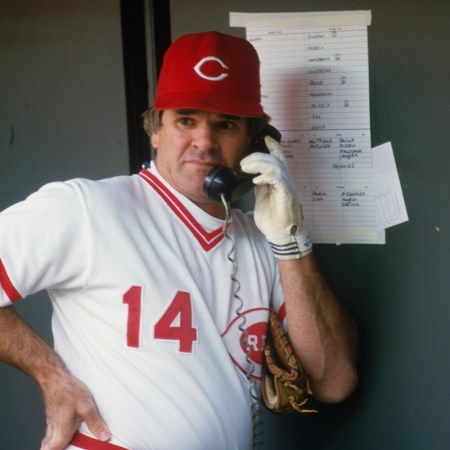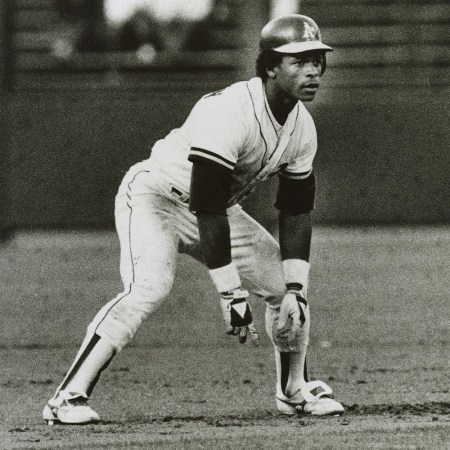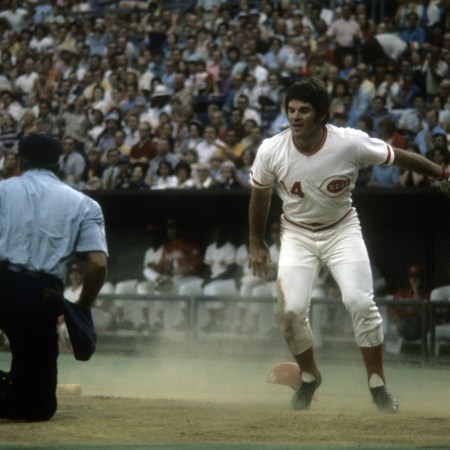After the 1961 MLB All Star Game, National League relief pitcher Stu Miller jokingly said that heavy wind at the newly-opened Candlestick Park, home of the San Francisco Giants, “blew me off the mound.” The offhand comment, made while wrapped up in chatter about the poor playing conditions at the stadium — which through the years became infamous — started a myth that followed Miller the rest of his life.
Though a wind gust did cause him to commit a balk, which helped the American League tie up the game, Miller was still trying to set the record straight in interviews 50 years after the fact. He did not completely, hilariously fall off the mound because of wind, but this year, MLB pitchers might intentionally look to create similar such legends for themselves.
Per Jayson Stark of The Athletic, MLB pitchers and their coaches have already figured out myriad ways to buck the pitch clock. MLB has given its umpires permission to use “common sense” in identifying circumstances that would warrant pitch clock-violation leniency.
Major League Baseball Finally Decides It’s Time for a Pitch Clock and Shift Ban
Larger bases for the 2023 MLB season could be approved in a vote that could happen as soon as todayManagers, pitching coaches and catchers are already using mound visits to disrupt the pitch clock. When it ticks close to zero and they know their pitchers won’t be able to toss the ball home in time, they’ll call a timeout and feign as though they meant to discuss strategy (or maybe appropriate wedding gifts) with the pitcher all along. This saves the pitcher from having an automatic ball called against them, which could be critical in certain situations.
However, mound visits are limited to five per game, plus an extra one in the ninth inning if a team is out of them. When a pitch clock violation appears imminent, and a team doesn’t want to utilize a mound visit to avoid one, players can get creative and push the limits of umpire common sense.
First, any player on the diamond can call timeout to tie their shoes. “But if there are four shoelaces that need to be tied every inning, umpires aren’t required to give that much leeway,” wrote Stark. When the shoelace-tying excuse is off the table, though, a pitcher can resort to claims of a wind-gust interruption.
“Blue Jays pitcher Kevin Gausman literally blew off the mound last Friday, on a particularly gusty day, with six seconds left on the clock,” Stark wrote. “Luckily for him, plate ump Dan Iassogna signaled for the clock to be reset. Afterward, Gausman wasn’t sure who had saved him from a violation, so I checked and reported back that it was the umpires’ call. ‘Good to know,’ Gausman texted back, then joked: ‘So when in doubt, act like it’s windy!’”
Like in the Miller ’61 All Star Game case, if a pitcher does so during his windup with one or more opposing players on base, he’ll have a balk called against him, allowing the runners to each advance a base. But if while standing on the mound with the pitch clock ticking toward zero and no pitch figured out, or if they’re just starting their elaborate windup with no men on base and they see a “1” on the pitch clock, they can try and fall off the mound on purpose without the fear of a balk being called against them. When the pitcher calls wind the culprit, it’ll be up to the umpire to decide if a ball should be awarded to the batter. A non-ball call would have to be really worth the potential embarrassment for a pitcher to attempt a stunt like this. But in a sport that’s value proposition as a vehicle for entertainment has been compromised, it would be compelling to see someone try.
There are more legitimate ways to stop a ticking pitch clock. According to Stark, if a catcher is struck by a hard foul ball and needs time to recover, the umpire will figure out when to get the clock going again after a delay. The same would go for when a hitter falls over in the box while avoiding a high-and-tight pitch or if a PitchCom device malfunctions. But clearly MLB players and coaches are thinking heavily about how they might thwart umpire decision-making related to the new rules when they need to. They’re also figuring out how they might gain advantages over the opposition while playing within the confines of the new rules.
At the time Stark wrote the piece, the rules changes had only been in effect for two weeks’ worth of spring training games. What will MLB personnel come up with across 162 games that actually mean something? We know garbage can-banging is out.
The Charge will help you move better, think clearer and stay in the game longer. Subscribe to our wellness newsletter today.

